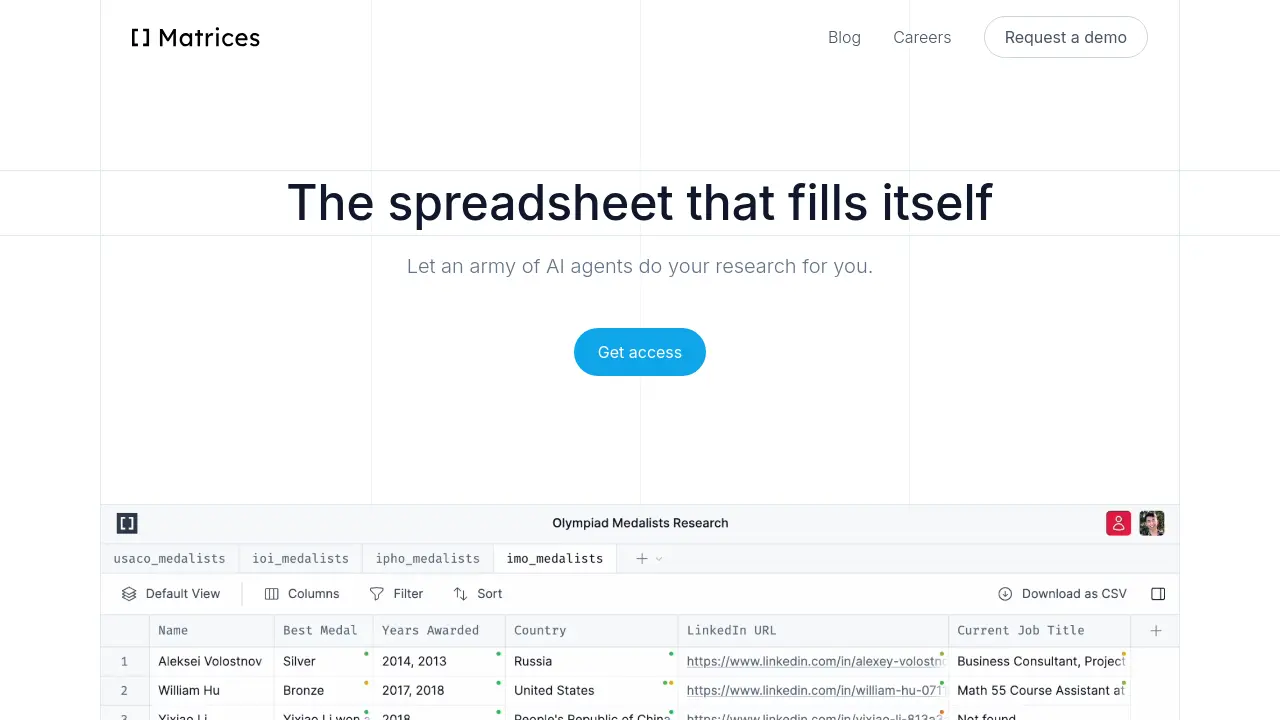Matrices AI
The spreadsheet that fills itself

Description
Matrices AI introduces a novel approach to spreadsheets, leveraging artificial intelligence to automate the research process. Instead of manual data entry and lookup, users can deploy an 'army of AI agents' to gather information, analyze data, and populate spreadsheet cells automatically. The platform emphasizes trust and transparency by providing multiple sources and confidence scores for each piece of information generated by the AI agents, allowing users to verify the research process.
Designed for ease of use, Matrices AI utilizes natural language processing, enabling users to perform complex tasks without needing traditional spreadsheet formulas or extensive training. It can connect to both public web data and private, proprietary data sources for comprehensive analysis. Furthermore, the tool is built to be extensible, allowing users to create custom automations and integrate them into their specific workflows. Personalization features ensure that the research results are tailored to the user's unique context and objectives, aiming to significantly increase efficiency for tasks previously requiring extensive manual effort.
Key Features
- AI Agent Research: Deploys autonomous AI agents to conduct research tasks automatically.
- Transparent Results: Provides answers with multiple source citations and confidence scores in each cell.
- Data Connectivity: Analyzes both public web data and internal proprietary data sources.
- Natural Language Interface: Allows users to operate the spreadsheet and perform tasks using natural language commands.
- Custom Automation: Offers infinite extensibility to build custom automations tailored to specific workflows.
- Personalization: Adapts research results based on user-provided context and goals.
Use Cases
- Automating market research and competitive analysis.
- Streamlining sales prospecting and lead enrichment.
- Accelerating due diligence for investments.
- Analyzing complex datasets combining public and private information.
- Replacing manual data entry and information gathering tasks.
- Managing and processing backlogs of research tasks efficiently.
You Might Also Like
Videmak Research AI
FreemiumSave hours of research with AI
Novela
Contact for PricingAI Marketing Simulations for Real-World Skills
Tensorplex
OtherBuilding Infrastructure for Decentralised AI
Glia
Contact for PricingUnify Human, AI, Voice, & Digital with the Only Platform Built for Financial Services
AnyClip
Contact for PricingThe Visual Intelligence Company